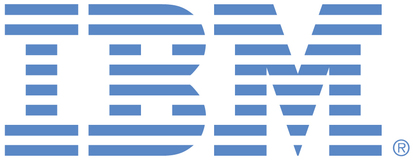
This is an IBM Automation portal for Integration products. To view all of your ideas submitted to IBM, create and manage groups of Ideas, or create an idea explicitly set to be either visible by all (public) or visible only to you and IBM (private), use the IBM Unified Ideas Portal (https://ideas.ibm.com).
Shape the future of IBM!
We invite you to shape the future of IBM, including product roadmaps, by submitting ideas that matter to you the most. Here's how it works:
Search existing ideas
Start by searching and reviewing ideas and requests to enhance a product or service. Take a look at ideas others have posted, and add a comment, vote, or subscribe to updates on them if they matter to you. If you can't find what you are looking for,
Post your ideas
Post an idea.
Get feedback from the IBM team and other customers to refine your idea.
Follow the idea through the IBM Ideas process.
Specific links you will want to bookmark for future use
Welcome to the IBM Ideas Portal (https://www.ibm.com/ideas) - Use this site to find out additional information and details about the IBM Ideas process and statuses.
IBM Unified Ideas Portal (https://ideas.ibm.com) - Use this site to view all of your ideas, create new ideas for any IBM product, or search for ideas across all of IBM.
ideasibm@us.ibm.com - Use this email to suggest enhancements to the Ideas process or request help from IBM for submitting your Ideas.

RFE Review. As part of our standard process for reviewing RFEs we have recently discussed this RFE and wish to note that it remains of long term interest to us. It is regrettable that we have not yet managed to prioritize this requirement for immediate action, but we will continue to monitor for popularity and keep it in mind for future plans. Status is maintained as Uncommitted Candidate.
Due to processing by IBM, this request was reassigned to have the following updated attributes:
Brand - WebSphere
Product family - Integration
Product - IBM Integration Bus (WebSphere Message Broker) - IIB
For recording keeping, the previous attributes were:
Brand - WebSphere
Product family - Connectivity and Integration
Product - IBM Integration Bus (WebSphere Message Broker) - IIB
Thank you for raising this requirement. We recognise that this new behaviour would improve the options a developer has when using the product. Although the Broker-wide and EG-wide listener solutions involve different sets of IIB processes, there is no reason why the same behaviour which has been provided on timeout with the EG-wide listener could not also be applied to the case of the Broker-wide listener. As things currently stand, the flow processing which occurs on the thread which propagates down the Out terminal of the HTTPInput node, is distinct from the thread which fires the Timeout terminal of the HTTPInput node (in cases where the Listener invokes timeout processing in the flow). A similar design-approach could be taken with the Broker-wide listener. In both cases this means that there is a potential (yet very small) timing window in which the HTTPReply node could be invoked by the first flow thread before the second thread from the Timeout terminal invokes the HTTPReply. In this situation designed behaviour is for the first thread to receive an exception (listener is already in state of timeout, and developer has clearly indicated they want to influence the timeout message so any other action would clearly be incorrect). We would apply the same designed behaviour to the flow at such time when this enhancement for Broker-wide listener is brought to the product. Status of this RFE is updated to Uncommitted candidate.